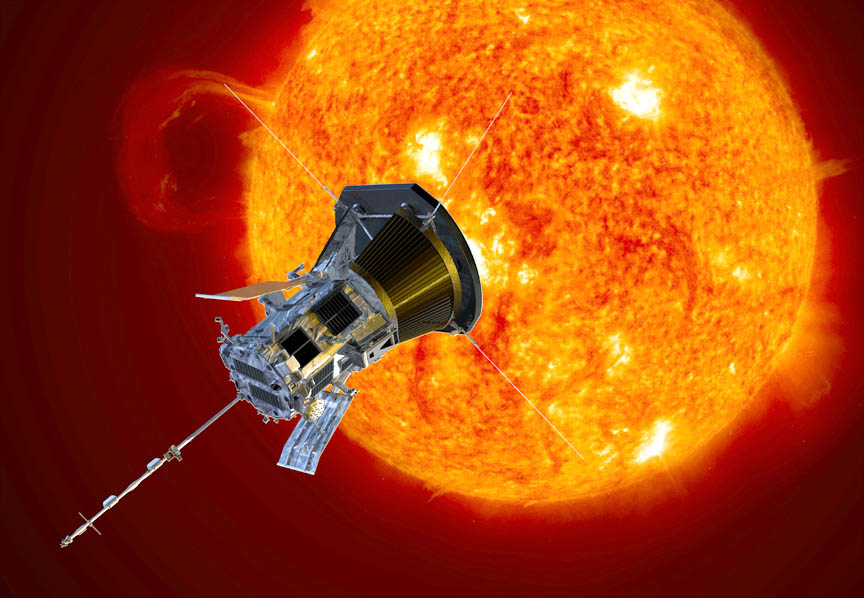
How would you like to take an all-expenses-paid trip to the Sun? NASA is inviting people around the world to submit their names to be placed on a microchip aboard the Parker Solar Probe mission that will launch this summer. As the spacecraft dips into the blazing hot solar corona your name will go along for the ride. To sign up, submit your name and e-mail. After a confirming e-mail, your digital “seat” will be booked. You can even print off a spiffy ticket. Submissions will be accepted until April 27, so come on down!
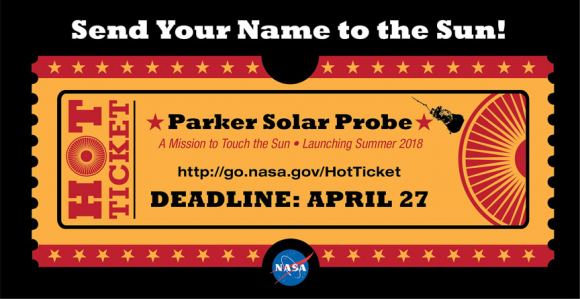
The Parker Solar Probe is the size of a small car and named for Prof. Eugene Parker, a 90-year-old American astrophysicist who in 1958 discovered the solar wind. It’s the first time that NASA has named a spacecraft after a living person. The Parker probe will launch between July 31 and August 19 but not immediately head for the Sun. Instead it will make a beeline for Venus for the first of seven flybys. Each gravity assist will slow the craft down and reshape its orbit (see below), so it later can pass extremely close to the Sun. The first flyby is slated for late September.
When heading to faraway places, NASA typically will fly by a planet to increase the spacecraft’s speed by robbing energy from its orbital motion. But a probe can also approach a planet on a different trajectory to slow itself down or reconfigure its orbit.
The spacecraft will swing well within the orbit of Mercury and more than seven times closer than any spacecraft has come to the Sun before. When closest at just 3.9 million miles (6.3 million km), it will pass through the Sun’s outer atmosphere called the corona and be subjected to temperatures around 2,500°F (1,377°C). The primary science goals for the mission are to trace how energy and heat move through the solar corona and to explore what accelerates the solar wind as well as solar energetic particles.
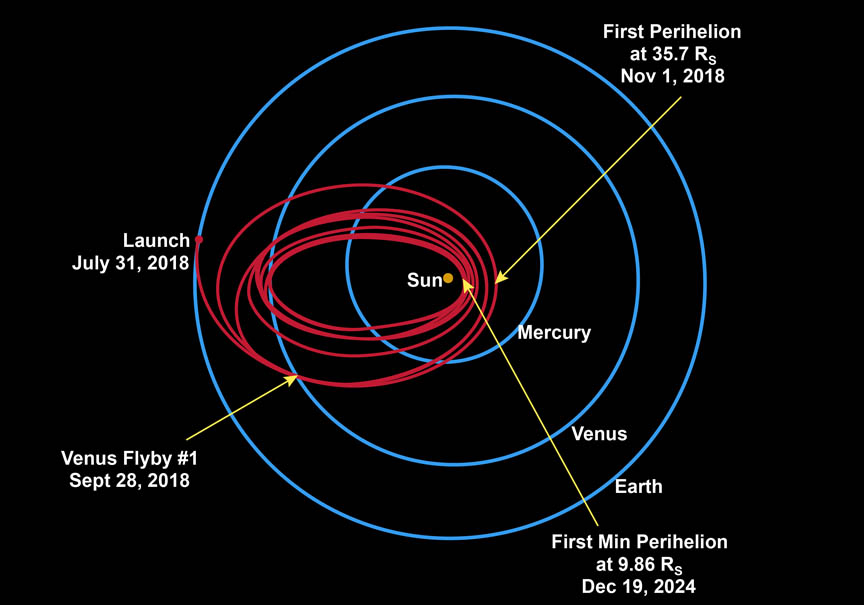
The vagaries of the solar wind, a steady flow of particles that “blows” from the Sun’s corona at more than million miles an hour, can touch Earth in beautiful ways as when it energizes the aurora borealis. But it can also damage spacecraft electronics and poorly protected power grids on the ground. That’s why scientists want to know more about how the corona works, in particular why it’s so much hotter than the surface of the Sun — temperatures there are several million degrees.
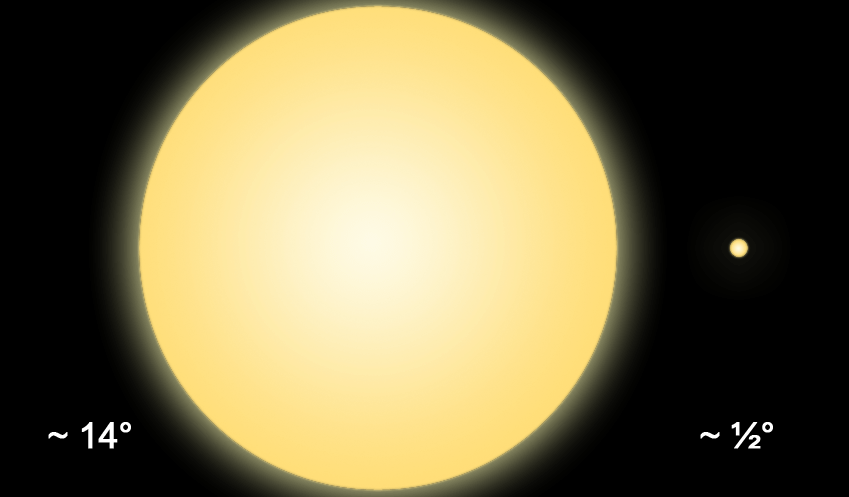
As you can imagine, it gets really, really hot near the Sun, so you’ve got to take special precautions. To perform its mission, the spacecraft and instruments will be protected from the Sun’s heat by a 4.5-inch-thick carbon-composite shield, which will keep the four instrument suites designed to study magnetic fields, plasma and energetic particles, and take pictures of the solar wind, all at room temperature.
Similar to how the Juno probe makes close passes over Jupiter’s radiation-fraught polar regions and then loops back out to safer ground, the Parker probe will make 24 orbits around the Sun, spending a relatively short amount of face to face time with our star. At closest approach, the spacecraft will be tearing along at about 430,000 mph, fast enough to get from Washington, D.C., to Tokyo in under a minute, and will temporarily become the fastest manmade object. The current speed record is held by Helios-B when it swung around the Sun at 156,600 mph (70 km/sec) on April 17, 1976.
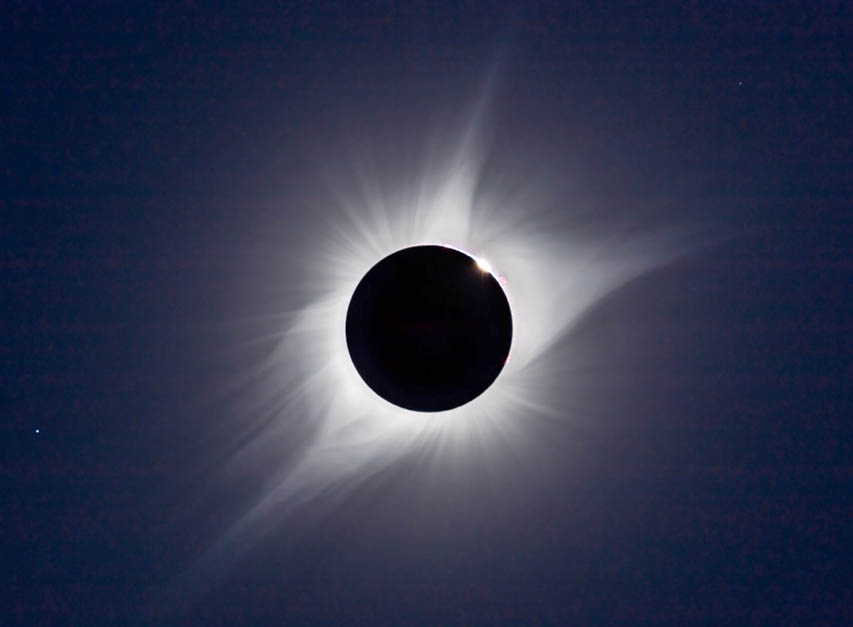
Many of you saw last August’s total solar eclipse and marveled at the beauty of the corona, that luminous spider web of light around Moon’s blackened disk. When closest to the Sun at perihelion the Parker probe will fly to within 9 solar radii (4.5 solar diameters) of its surface. That’s just about where the edge of the furthest visual extent of the corona merged with the blue sky that fine day, and that’s where Parker will be!

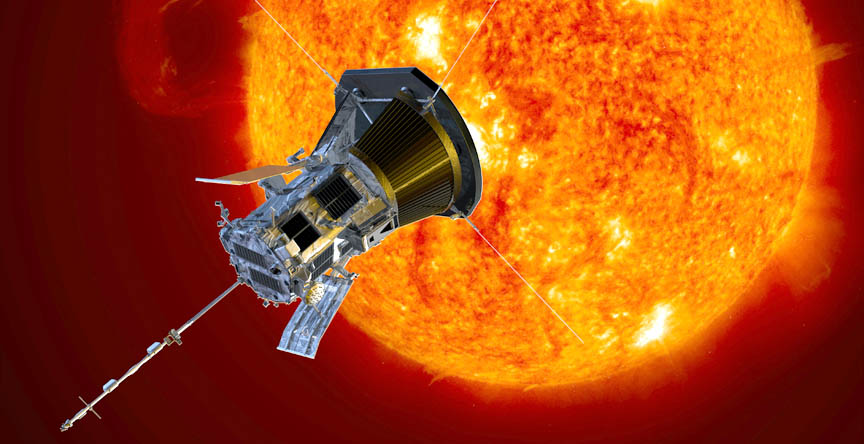
I think ‘discovered’ is too strong a word – he predicted the solar wind in 1958 and it was then confirmed by Mariner 2 in 1962. Amazing to think that few believed that such a wind could exist!
While some brainwashed folks believe in flat earth, their close cousins in NASA believe in a fictitious yellow sun ??. no amount of evidence or logic can convince these jokers of the reality that the sun is a WHITE star and they repeatedly misrepresent the sun as a yellow star in space. I wonder why the knowledgeable folks in nasa do not correct their own staff and pull them up for peddling nonsese.
Those who are not aware or cannot believe that the sun is white, should search on google “what is the color of the sun” & also see some pics of white sun taken from space. Also, look up that glass prism experiment from school days, where white light gets split into rainbow colors. Where do you think that white light comes from ?
Vchirayil,
You’re right about the appearance of the Sun – pure white. I think our earthly experience of the Sun through the atmosphere, which “yellows” it, makes some people think of it that way. The Sun is also a G class star, which is yellowish compared to class A (Vega), pure white, so there is a difference in spectral color. It makes me wonder if you put Vega and the Sun side by side if the Sun would then exhibit a slightly warmer hue.